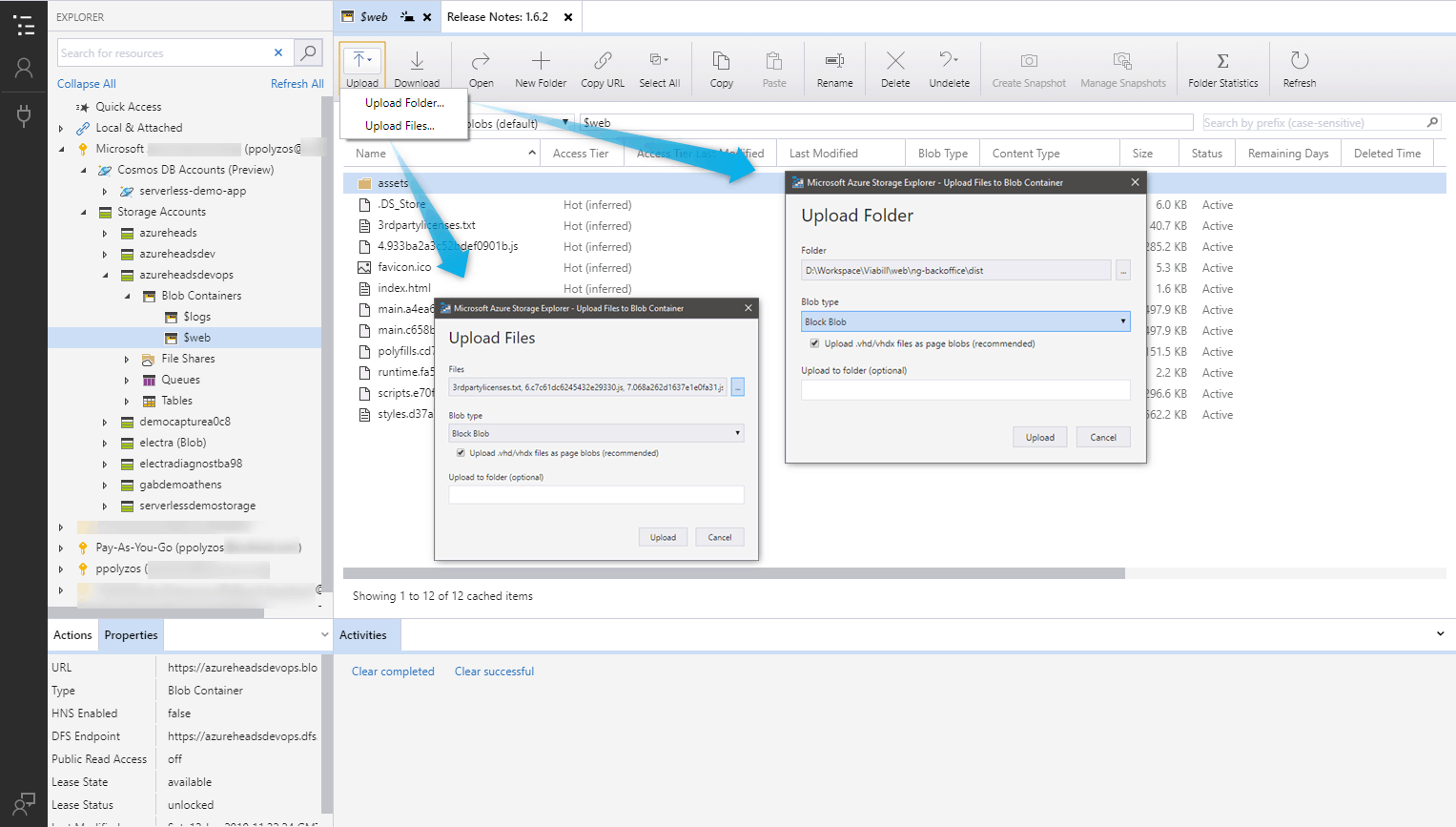

AZURE DATA STORAGE EXPLORER DOWNLOAD
The progress of a blob download appears in the Azure Activity Log window. Choose the blob name and then select the Open button.Open the shortcut menu for one or more blobs, and then select Open.In Cloud Explorer, use any of the following methods: For example, filtering on the prefix "HelloFabric/" returns all blobs that begin with that string. The prefix can include a delimiter if you are using a delimiter to organize blobs in a virtual hierarchy. The filter text box is case-sensitive and doesn’t support filtering with wildcard characters. You can filter the blobs that are displayed by specifying a common prefix.įor example, if you enter the prefix hello in the filter text box and then select the Execute ( !) button, only blobs that begin with "hello" appear. You also can't delete a folder to delete its file contents, but must instead delete the entire contents of a folder to delete the folder itself. When you’re in the container’s folder, you can go back to the root of the container by selecting the Open Parent Directory (arrow) button.īecause folders in blob containers are virtual folders, you can't create an empty folder. The file appears in the specified folder in the container.ĭouble-click the folder or select Enter to see the contents of the folder. If you don’t specify a folder name, the file is uploaded to the top level of the blob container. You can add subfolders in container folders by following the same step. In the Upload New File dialog box, select the Browse button to specify the file that you want to upload, and then enter a folder name in the Folder (optional) box. In the container window, select the Upload Blob button. To create a folder or subfolder in a blob containerĬhoose the blob container in Cloud Explorer. It only removes it from the blob container.) (Deleting a file from a blob container doesn’t delete the underlying file. Refresh the list of blobs in the container.You can perform the following operations on blobs by using the buttons in the upper-right corner of the blob container view: When you view the contents of a blob container, it appears on a tab known as the blob container view. Open the shortcut menu for a blob container name in the list, and then select Open. To display a list of the items in a blob container Open the shortcut menu for the blob container that you want to remove, and then select Delete. The blob container name must begin with a number (0-9) or lowercase letter (a-z). Select Enter on your keyboard, or you can click or tap outside the name field to save the blob container. In the Create Blob Container dialog box, enter the name of the new container. Open the shortcut menu for the Blobs node, and then select Create Blob Container.
AZURE DATA STORAGE EXPLORER HOW TO
For more information, see How to use Blob storage from. Blob containers contain blob files, and you can organize these blobs into folders and subfolders. The Blobs node displays a list of containers for the selected storage account. To view resources in a storage account, expand the storage account’s node in Server Explorer where you see Blobs, Queues, and Tables nodes. You can continue to work in other areas of Visual Studio while the storage emulator starts. If the storage emulator hasn’t been started when you expand the Development node, it automatically starts. To see the storage emulator account’s resources, expand the Development node. The storage emulator account is listed in Server Explorer under the Storage node as the Development node. Server Explorer automatically shows a list of blobs, queues, and tables in your storage emulator account. View and manage storage resources in Visual Studio If needed, you can use the Azure Portal or continue to use the Azure node of Server Explorer in previous versions of Visual Studio.įor more information about Visual Studio 2022, see our release notes.

This is both a valuable debugging tool and allows for CLI operations such as installing packages. The Kudu console gives you direct, elevated command-line access to the App Service server and its file system.

You can use it to work visually with Azure Storage data on Windows, macOS, and Linux.


 0 kommentar(er)
0 kommentar(er)
